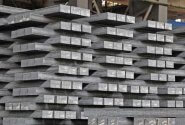Enough of Iran’s strong potential in the production and export of steel and raw materials, Iran is currently the largest producer and extractor of iron ore and steel in the MENA region, and has announced its ability to double production and to Exporting as many of its products as possible has led to initial negotiations with customers and new business leads.
According to the reports of upstream organizations (based on the base year of 2018), Iran’s nominal steel production capacity will be about 38 million tons by 2020, which has been achieved this year, and Iran’s export reports even in foreign information channels such as Steel Mint and Metal Bulletin has been recorded and reported with an increase of 11% compared to the same period of the previous year. This is at a time when most steel-producing countries have stopped production due to the corona virus epidemic or have met only domestic demand by reducing production.
Due to the development and industrialization of the country, Iran’s steel industry has grown significantly over the past decade and has gained high maneuverability in the international market. This issue is the result of a huge wave of steel projects in the country for more than a decade and this movement continues and it is predicted that this issue will continue until January of the next decade, assuming that Iran’s steel production exceeds 55 million. Tons will pass through the year. These figures are in line with the projected crude steel production capacity in line with the country’s 2025 steel industry outlook.
*** Iron ore is a powerful arm of steel exports
After several years of intensive growth in Iran’s iron ore production from 10 to 56 million tons between 2000 and 2013, the development of iron ore in the country along with global iron ore finally stopped and the development of the steel industry was based on concentrate and pellets. Iran also changed its steel production infrastructure and was able to change its steel industry development roadmap in accordance with international standards. After this replacement, Iran’s iron ore production decreased to about 45 million tons in 2016, which is a surplus of iron ore production. It is spent on other industrial uses. But again, with growing international market demand and a shortage of pellets and concentrates, iron ore production rose again to almost 57 million tons.
*** Iran Steel Production Performance Report
Iran’s steel industry has been constantly evolving over the years in the face of all the pressures and obstacles created by foreign forces, such as US sanctions and the outbreak of the Corona virus, which has severely affected the performance of the world’s top producers. According to the World Steel Association, crude steel production in Iran increased by 14.4% in July compared to the same month last year, while the average global production of this product in that month decreased by 2.5%. Iran’s crude steel production also increased by 30% in 2019, while the average global growth in this sector was 3.5%. Iran managed to produce 31.9 million tons of crude steel in 2019, while this figure was 24 million tons in 2018.
Iran’s steel production is expected to reach 30 million tons this year (according to the solar calendar (ending March 20, 2021), of which more than 10 million tons will be exported.
*** Iran Steel Export Performance Report
Iran’s steel exports in the first six months of this year have decreased by 33% compared to the same period last year. As reported by Metal Bulletin and other international analysis publications, the decline in exports of these goods is mainly due to reduced foreign trade due to virus outbreaks. Corona as well as increasing demand for said products domestically. Iran exported 1.786 million tons of steel during the first five months of this year (20 one-year periods between March and August 21). It should be noted, however, that Iran’s reports are not an official reference because Iran exports its actual volume due to possible sanctions. We do not report anything new from the United States, and we are content with the data of official publications only.
*** Persian Gulf region Lean steel export market
Currently, the Persian Gulf region has the highest demand for Iranian steel, whether raw or processed. For example, for Iranian iron and steel products, very attractive prices have been received from the UAE, Qatar and Kuwait. Given that the annual import of the MENA region is 36 million tons of steel, so this region will be a large market for the export of Iranian steel products. An opportunity that Iranian steel producers should pay attention to and take advantage of their competitive advantage.
One of the biggest competitive advantages of the Persian Gulf is the proximity of these countries to Iran, which greatly reduces the risk of transporting goods and transportation and transit costs for Iran, and as an offer can provide the basis for maximum exports. Of course, it should be noted that exports are only based on goods that we have a surplus of production and consumption in the domestic market. For example, as mentioned in the previous analysis, the export of long sections in the current conditions of the Iranian market is not in the interest of the Iranian economy and the domestic steel supply chain.
*** Potential of Iranian steel exports to Turkey
Turkey is an important target market for Iranian iron ore. After China and India, Turkey is the third largest exporter of raw materials in the Iranian steel chain. In 2019, Turkey imported about 11 tons of iron ore from Iran, which is estimated to be worth $ 3 billion. Research on the iron ore market in Turkey concludes that the countries supplying Turkish iron ore and the market volume of each of them will be as follows: Brazil 33.5%, Ukraine 24.3%, Sweden 18.4%, Russian Federation 14.6%, Canada 4%, Finland 3.6% and Other countries less than one percent.
If Iran can put iron ore processing on the agenda in the current situation where the cost of manpower and equipment is on the agenda, the cost price of crude steel will be lower than that of iron ore exporters to Turkey due to the unprecedented growth of the dollar in Iran. On the other hand, most of the countries that export iron ore to Turkey are very far from this country, and this in itself can be considered a competitive advantage for Iran’s steel exports. With the takeover of the Turkish crude steel market, we will expect an 18% growth in Iran’s exports.
این مطلب بدون برچسب می باشد.












ثبت دیدگاه